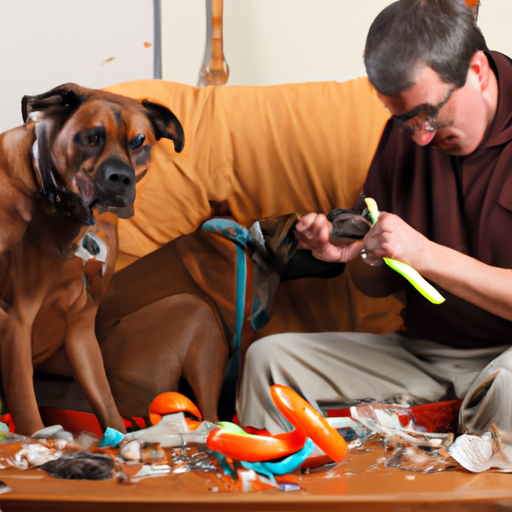As a caregiver, you often find yourself in situations where you have to balance the needs and wants of your beloved ones. When it comes to your furry friends, this chore becomes even more challenging. But worry not, this guide is here to help you find a way out of the “chewing conundrum”.
1. Understanding Why Dogs Chew
Before we can address the issue, it’s crucial to understand why dogs chew in the first place. Chewing is a natural behavior for dogs. They do it for various reasons, such as teething, boredom, anxiety, or simply because they find something tasty.
- Teething: Puppies chew more during their teething period which can last until they’re about six months old.
- Boredom: Dogs often chew to entertain themselves. If they don’t have enough physical and mental stimulation, they might resort to destructive chewing.
- Anxiety: Chewing can be a stress-relieving activity for dogs. It’s common for dogs with separation anxiety to chew on things that smell like their owners.
- Taste: Sometimes, dogs chew because they find something tasty or interesting.
Understanding these reasons will help you in finding the right solution.
2. Training Your Dog Not to Chew
Training is a significant part of curbing your dog’s destructive chewing habits. Here are some tips to consider:
-
Provide Chew Toys: Offer a variety of chew toys and rotate them regularly to keep your dog interested.
-
Use Deterrents: Spray deterrents can make items less appealing to chew.
-
Reward Good Behavior: Positive reinforcement is key. Reward your dog when they chew on their toys instead of household items.
-
Consistent Commands: Use consistent commands like “leave it” when they start to chew on something inappropriate.
3. Physical and Mental Stimulation
Keeping your dog physically and mentally stimulated can significantly reduce their destructive chewing behavior. Regular walks, playtime, and interactive toys can help keep your dog engaged and satisfied.
| Activity | Description |
|---|---|
| Walks | Regular walks not only provide physical exercise but also mental stimulation as your dog encounters different smells, sights, and sounds. |
| Playtime | Regular play sessions with you or other dogs can help tire out your dog and reduce boredom. |
| Interactive Toys | These toys can keep your dog engaged for long periods. They often involve a reward system that motivates your dog to solve a puzzle. |
4. Managing Separation Anxiety
If your dog’s destructive chewing is due to separation anxiety, it’s crucial to address the root cause. You might need to consider professional help if the anxiety is severe. However, for mild cases, here are some strategies:
- Develop a calm goodbye and hello routine
- Leave your dog with items that smell like you
- Use a dog anxiety wrap
- Consider dog daycare or a pet sitter
5. When to Seek Professional Help
If your dog’s chewing habit persists despite your best efforts, it might be time to seek professional help. A professional dog trainer or a veterinary behaviorist can provide further guidance and strategies tailored to your dog’s needs and your specific situation.
FAQs
Q: How long does the teething period last in dogs?
A: The teething period can last until your puppy is about six months old.
Q: Can I use household items as chew toys?
A: It’s better to use specially designed chew toys to ensure safety and health.
Q: What are some signs of separation anxiety in dogs?
A: Signs of separation anxiety include excessive barking, panting, pacing, and destructive behavior when left alone.
Q: When should I consider professional help for my dog’s chewing?
A: If your dog’s destructive chewing persists despite trying various strategies, it may be time to seek professional help.



